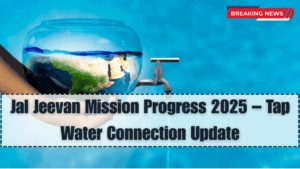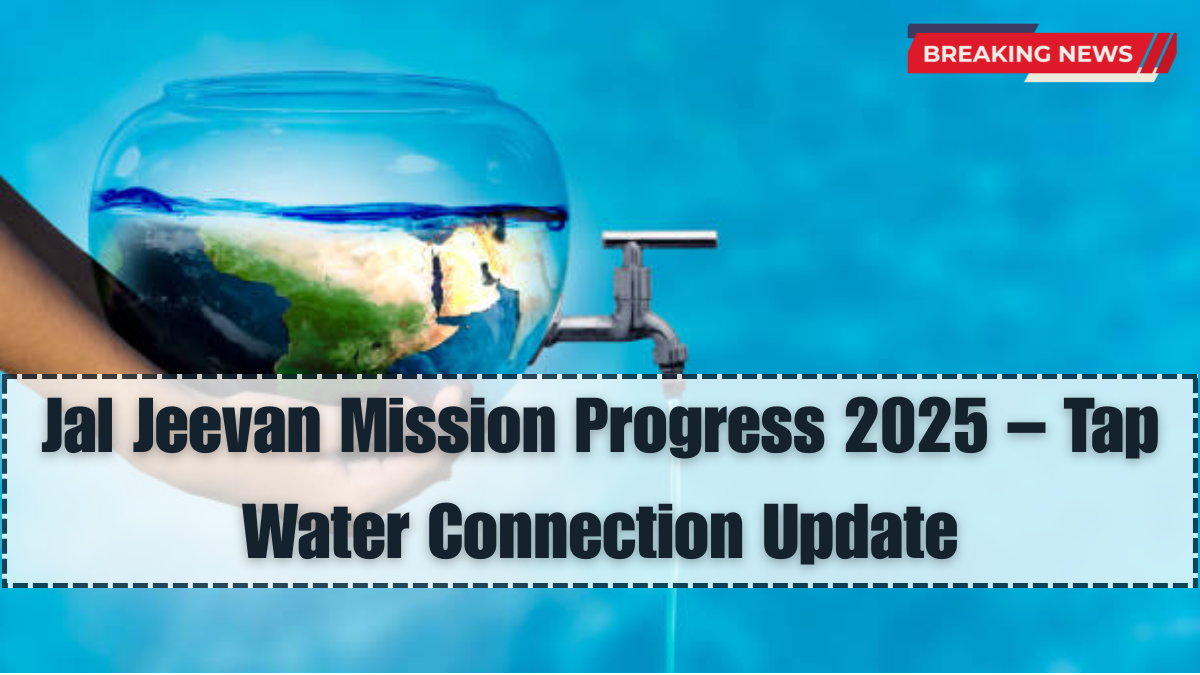India’s flagship rural water supply program, the Jal Jeevan Mission, has achieved remarkable success in 2025, with millions of new tap water connections delivered to households across states and union territories. The latest Jal Jeevan Mission Status 2025 shows accelerated implementation, especially in remote villages, tribal belts, and drought-prone regions where access to clean water was once a luxury.
Launched in 2019 with a vision of ensuring “Har Ghar Jal” (water to every home), the mission continues to make a transformative impact on rural health, women’s empowerment, and school sanitation. As of June 2025, over 75% of rural households in India now have functional household tap connections (FHTCs), a massive leap from just 17% coverage in 2019.

Key Achievements in Jal Jeevan Mission Status 2025
The Jal Jeevan Mission Status 2025 reflects not just numerical progress but also real improvements in the lives of rural communities. This year’s update includes:
-
Over 18 crore people benefited from new tap water access
-
More than 12 crore rural homes now have FHTCs
-
Schools, anganwadis, and health centers equipped with safe drinking water
-
85% of Gram Panchayats now have active Village Water & Sanitation Committees (VWSCs)
-
Water quality labs set up in over 3,000 districts with testing kits distributed to citizens
States like Goa, Telangana, and Haryana have achieved 100% coverage, while others like Uttar Pradesh, Odisha, and Madhya Pradesh have recorded double-digit progress in just the last 12 months under the Jal Jeevan Mission Status 2025.
State-Wise Household Tap Connection Status (2025)
Here’s a snapshot of some major states based on the latest data released by the Ministry of Jal Shakti:
| State/UT | Coverage (as of June 2025) | Status |
|---|---|---|
| Goa | 100% | Fully Covered |
| Telangana | 100% | Fully Covered |
| Punjab | 92% | Near Completion |
| Uttar Pradesh | 61% | Active Implementation |
| Rajasthan | 65% | Accelerated Phase |
| Odisha | 68% | Steady Progress |
| West Bengal | 56% | Under Expansion |
| Assam | 58% | Coverage Improving |
With regular reviews, central-state coordination, and real-time dashboards, the Jal Jeevan Mission Status 2025 is being monitored closely at national and village levels.
Technology-Driven Monitoring and Community Participation
One of the unique features of the Jal Jeevan Mission is its integration of community-led implementation with advanced technology. In 2025, several innovations have driven the mission’s efficiency and transparency:
-
Use of IoT-based sensors to monitor water supply pressure and quantity
-
Mobile-based geo-tagging for pipeline and infrastructure validation
-
Real-time dashboards accessible at Gram Panchayat and district levels
-
Training of paani samitis and rural women for water quality testing
-
Public feedback systems integrated with Jal Jeevan Survekshan ranking
This model empowers local bodies to manage, operate, and sustain tap water infrastructure under the Jal Jeevan Mission Status 2025 without full reliance on external agencies.
Focus on Water Quality, Sustainability & Climate Resilience
While expanding coverage, the government has ensured that the Jal Jeevan Mission Status 2025 maintains strong focus on sustainability and quality. The mission is not just about laying pipes but about building climate-resilient, long-term solutions:
-
Water source strengthening through watershed management
-
Rainwater harvesting and recharge wells in water-stressed districts
-
Regular water quality testing in fluoride and arsenic-affected areas
-
Convergence with schemes like MNREGA for infrastructure support
-
Capacity building of local engineers, masons, and functionaries
Such integrated efforts ensure that rural tap connections don’t dry up, helping make safe drinking water in India a permanent reality.
FAQs
How many households have received tap water connections under Jal Jeevan Mission as of 2025?
As per the Jal Jeevan Mission Status 2025, over 12 crore rural households have functional tap water connections.
Which states have achieved 100% rural tap water coverage?
States like Goa, Telangana, Haryana, and Andaman & Nicobar Islands have reached full coverage.
Is Jal Jeevan Mission only for households?
No, the scheme also covers schools, anganwadi centers, health sub-centers, and community buildings in rural areas.
How is water quality ensured under the mission?
Water quality is monitored through certified laboratories, field testing kits, and public participation, especially by trained women volunteers.
What are the future goals under Jal Jeevan Mission beyond 2025?
The mission aims for 100% rural tap water coverage by December 2026, with long-term sustainability, source security, and local water governance.
Click here to know more.
